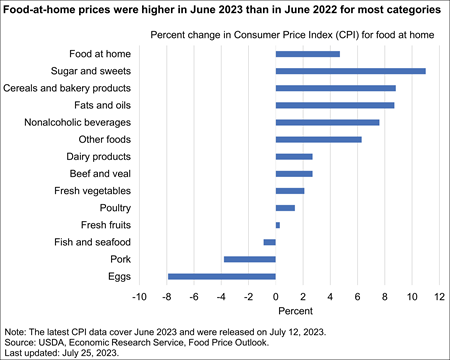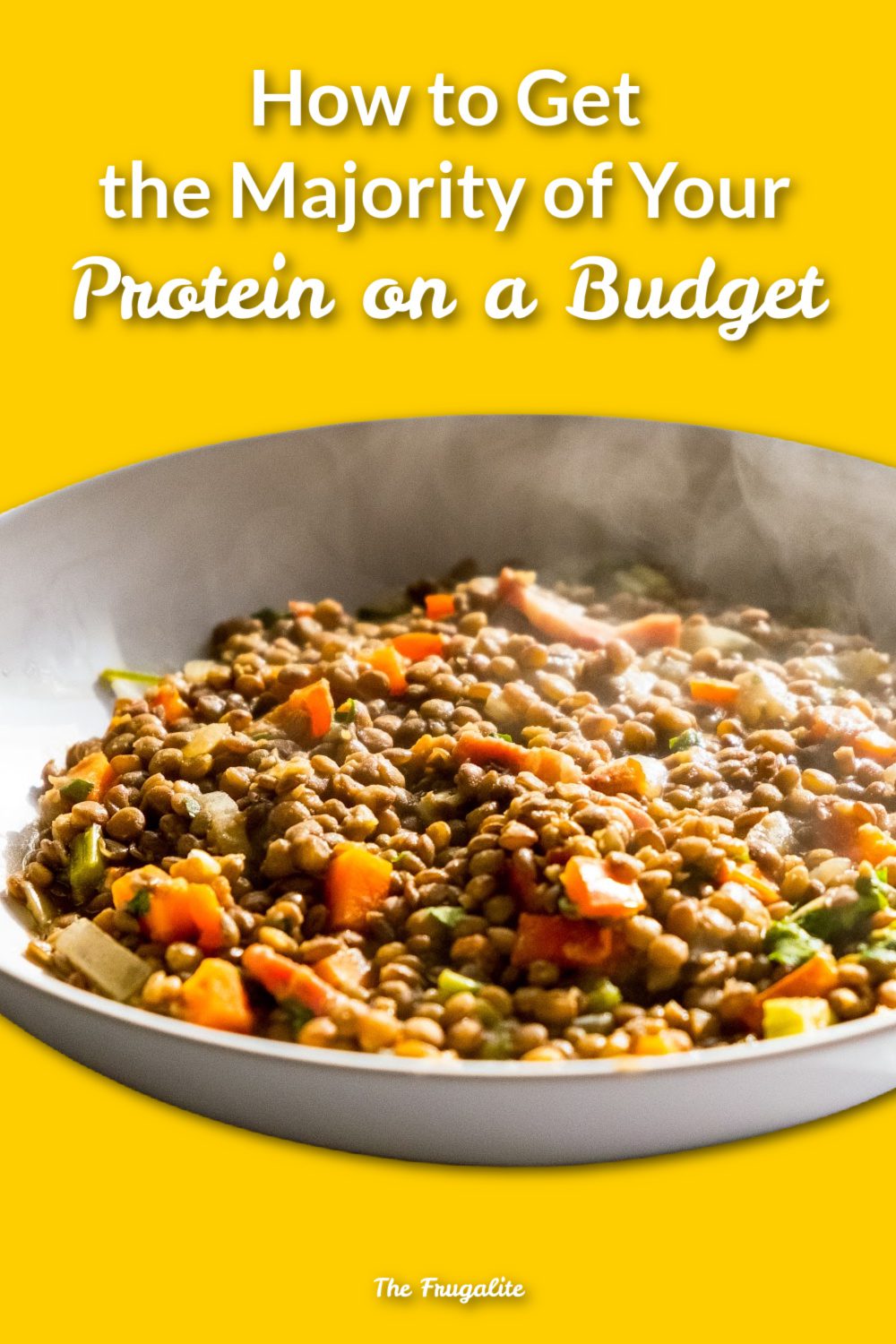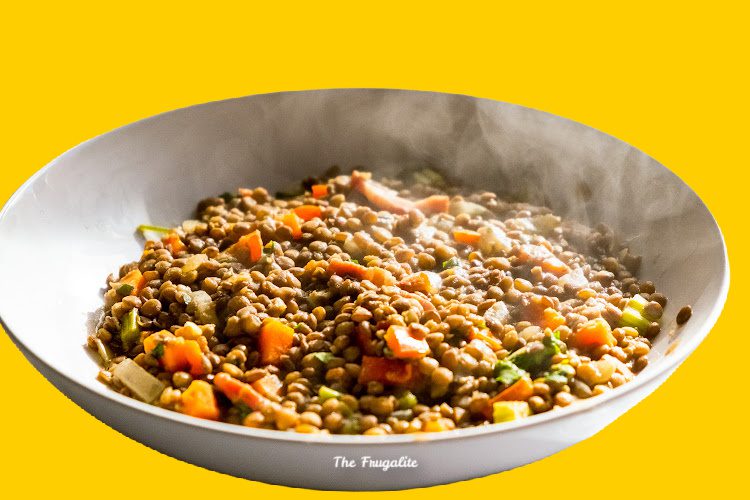(Psst: The FTC wants me to remind you that this website contains affiliate links. That means if you make a purchase from a link you click on, I might receive a small commission. This does not increase the price you’ll pay for that item nor does it decrease the awesomeness of the item. ~ Daisy)
We all know the cost of living has been going up lately. Groceries are no exception. If anything, their costs have skyrocketed more than anything else. The foods with the highest price increase? Meat. According to the USDA, foods such as poultry, fish and seafood, pork, and beef have had a price increase of 8% to 16% in the last year alone, with the average inflation being at an insane high of over 7%.

So what can I do to stick to get protein on a budget?
Well, one thing I’m really working on doing is eating less meat at home. Don’t get me wrong, I’m a sucker for a great steak or roast, but at the end of the day, I can’t afford to spend $5 on a single chicken breast or $15 on a small roast beef. Not daily, anyways.
So, I’ve cut back drastically on my meat intake. The two main things I’ve done to achieve this goal are to make the meat stretch longer and add in alternative protein sources.
Soups and casseroles
If I were having a plate of food, I’d probably have about a whole chicken breast, a cup of veggies, and maybe some rice (though I’m not the biggest plain rice fan, so I probably wouldn’t even do that.)
Instead, what I do now, is cook my protein source and have it in very small pieces (think pulled pork, shredded chicken, ground beef, etc.). From there, I’ll put it in my soup or casserole. The biggest key I find here is making sure the meat is in smaller pieces. If you only have two medium-sized chunks of meat in your meal, chances are you’ll feel like you barely got any. On the other hand, if you have a little bit in every bite (even every other bite!), it’ll feel like you’re having more, even if it’s the exact same amount. It’s one of those weird psychological tricks, but trust me, it works.
Add more vegetables
I know not everyone loves vegetables, but I do. I find they add tons of flavor and nutrients, so I add as many as I can. I get it, though. Vegetables have been more and more expensive, too, though. The vegetables I tend to buy in a week, depending on what’s on sale. If there isn’t anything on sale, I mainly stick with frozen. My go-to? Frozen spinach.
Now I know for most, that may not sound super appealing. Heck, I tend to only like fresh spinach. However, when it’s disguised in sauce, I don’t even notice it. I’ve gotten in the habit, every time I make spaghetti, I’ll use a can of sauce and half a pack of frozen spinach. I can usually get my frozen spinach for $1.99, and it’s packed with fiber and nutrients. I also don’t even notice it in my casseroles and pasta.
A lot of my other affordable go-to cheap frozen veggies include; corn, peas, green beans, broccoli-cauliflower mix (I find the blend tends to be way less expensive than either vegetable on its own, and I can just divide it later if I only want one.), California mix and stir-fry blends.
Meat alternatives for protein on a budget
While I’ve gone over the basics, here are some of my go-to cheap protein options and alternatives.
- Tuna – It has so many great uses. I didn’t use to like it, but what can I say, it’s growing on me. I even had a tuna melt just before writing this article.
- Lentils – This is honestly one of my favorites. I almost always have two different kinds on hand. I will add lentils to just about anything. Even mashed potatoes (The orange ones will blend right in, be unnoticeable and add so much protein!)
- Beans – Be it kidney beans, black beans, baked beans, pinto beans, navy beans, honestly, the list goes on, but they are amazing. If you have time to cook them, I recommend getting the dried beans for a much better value, but canned beans are still a great price and super quick and easy.
- Edamame and Tofu – I know not everyone will be fond of these two options, and that’s okay. I’m still going to list them, though, because both can be extremely versatile, cheap, and packed with protein. Though, if you’re going for the Edamame, I recommend frozen as it’s much more affordable and easy to find.
- Nuts and Seeds – While some of these can run expensive, I recommend peanuts and sunflower seeds for great frugal and filling options.
- Protein Powder – I love keeping protein powder on hand. Not only is it good for a smoothie in a pinch, but I’ll sometimes also mix mine with iced coffee or even add a little to my baked treats for a few extra nutrients.
What are your go-to protein sources?
There are so many, and I’m sure there were some that I’ve missed. These are just the ones I almost always have on hand in a pinch.
Share your best frugal sources for protein on a budget in the comments!
About Chloe Morgan
Chloe Morgan grew up living with a tight budget. In her late teens and early 20’s all the lessons she’d learned started to slip, like it does for many college age students on their own for the first time, and with their first credit card. As she’s gotten older, she’s started to deal with the repercussions and has taken on a frugal way of living, keeping her costs low, as she pays off debt and saves for her future. Chloe lives in Northern Ontario, Canada, with her cute dog, Rhea.












11 thoughts on “How to Get the Majority of Your Protein on a Budget”
Nice article!!
I m a huge soup fan myself n stretch it large.
I also love quiches n frittatas loaded with many vegetables.
Stir fries do not require much meant either.
Thanks for this!!
What I absolutely love are bacon and egg sandwiches. I boil a few eggs, chop them up and sprinkle some bottled real bacon bits, mayonnaise, chopped celery, chopped fresh apples, dried onions, garlic, salt and pepper. It’s fast, cheap, easy and nutritious. Also, I make my own bone broth from leftover meat, seafood and veggies then make a soup out of it. Lastly,I make egg drop soup. You take chicken broth, onions, garlic, mushrooms and heat it to below boiling and drop in whole raw eggs while stirring it with a fork to separate the eggs. Yum! You could also add leftover veggies for a complete and filling meal. Lastly, when you eat beans, be sure and eat rice or other carb so it becomes a complete protein.
What you are eating is gourmet egg salad. I love egg (and chicken) salad – have had celery and apples (and walnuts) in chicken salad but not egg salad. I definitely will be trying bacon and egg salad in the near future.
Don’t forget stuff like beans, peas, and quinoa! Yogurt also has a fair amount of protein, as do chick peas. There’s another article on this site giving more cheap protein sources. Good things to know these days!
I like chickpeas with fluffy German style dumplings in a good chicken bone broth. A bit of fine chopped partly as garnish or stirred in the dumplings. Cooks fast. Tastes rich. Is filling!
Yes I also make soups with lentils, beet powder, turmeric powder, onion powder, a bit of black pepper so the full power of turmeric is at work. I add diced carrots and peppers or celery.. whatever is on hand. The powders make a warm richer flavored broth.
When my kids were little I’d add in frozen mixed veggies and beans to their meat spaghetti sauce. They thought that’s how everyone ate it until they went to school! After that, add-ins were puréed.
Big fan of lentils and beans, heart healthy and low cost.
Textured Vegetable Protein may sound gross but it can be a great mix-in with burger or even by itself in soups or burritos. One of the cheapest places to get it is dried in the spices section of stores that cater to Mexican styles of cooking. For example I can get a pound of the stuff for about three dollars, dried, which makes a massive amount of protein. I put it in chili along with my meat and I like the texture.
Pressure cookers are great for cooking beans quickly. So you use less cooking fuel.
Greek yogurt, cottage cheese, and nut butters are some of my favorite protein sources.
Another recipe for stretching your chicken meat is to mince one breast and one thigh in a food processor with half an onion and seasoning. Scoop out meat into a bowl and take reserved chicken skins and cut the larger pieces into pieces approximately the size of your hand. (Sometimes you can get extra skins from the meat clerk’s at the market. If you can, do. They’re great for this recipe and others.)
Make about four servings of Stovetop stuffing or a flavorful pilaf ahead of time and cool.
Take your chicken skin pieces and put a layer of your ground chicken meat on the inside of the skin. Top with a good tablespoon of the stuffing and roll the filling inside the meat, tucking the skin underneath. Secure with soaked wooden toothpicks or butchers twine so that each meat packet is secure and place in a lightly greased baking pan. These keep well, so make as many as you have ingredients for.
Bake at 350° for about forty-five minutes (check after a half hour, especially if they are spaced apart in the pan. Meat should be firm and well cooked and skins should be brown and crispy. Serve with a white sauce or good gravy. One breast and one thigh should make about four chicken rolls.
If you don’t have chicken skins, you can roll short biscuit dough about 1/4″ thin, cut rounds with a large biscuit cutter, add meat layer and fill with cooked seasoned vegetables. Fold and seal as for ravioli, prick tops, baste with melted butter and bake at 425° for twenty minutes. Check for doneness. You can also add a little gravy to the filling either method, but don’t put more than a teaspoon or so or they’ll leak all over.
Enjoy.
My kids don’t eat soup often, but surprisingly they like lots of international foods. Both were weaned on hummus (they’re 9 and 6) and they prefer plain yogurt. When we do kebabs (for example), my wife and I add lots of veggies to our small pieces of lamb or chicken, along with lentils and whole wheat pita. Kids eat it up.